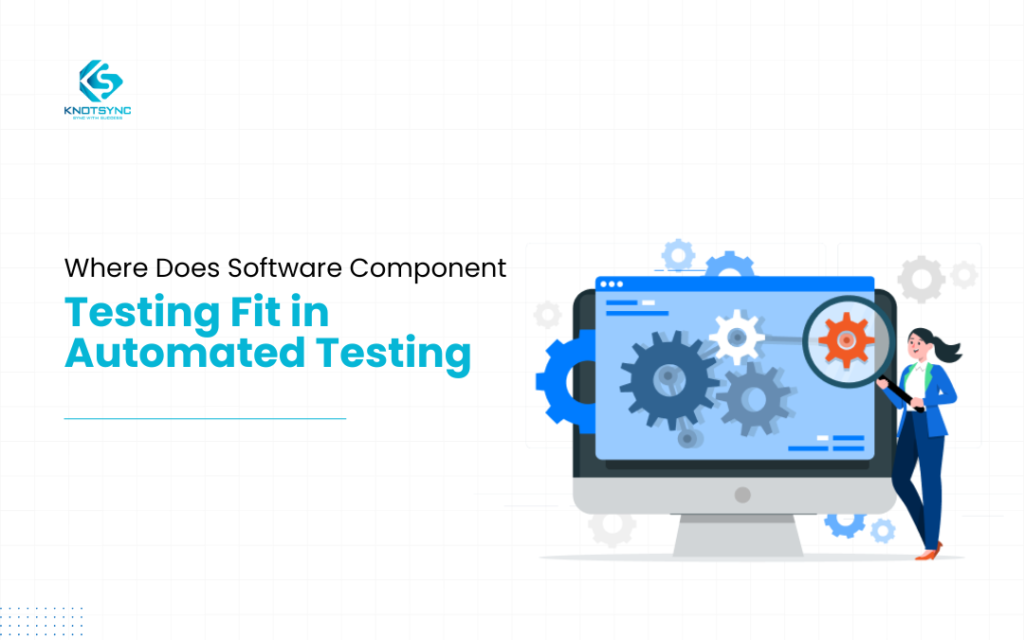The first thing that comes to mind when considering automating component testing is how it fits in. It’s essential to understand the role of software component testing. Software component testing has a key role in analyzing individual parts or modules of a software application.
Identifying problems early in development can save both time and money in the long run. All these smaller pieces must work separately. This should be done before putting them in the bigger system.
Automated testing helps check if the software works properly. Software component testing means testing one small part at a time instead of the whole thing at once. This makes finding and fixing mistakes easier before they cause big problems. When bugs are caught early, the software runs more smoothly and works the way it should. Testing each part separately also makes the whole testing process simpler and easier to manage, helping developers create better, more reliable software.
Software Component Testing Fundamentals
Software component testing involves understanding its purpose, limitations, and how it interacts with other types of testing. This article will give its definitions and the boundaries of its application. You will also see the comparison of automated and manual methods.
Definition and Objectives
Software component testing means checking one part of a software system at a time instead of the whole thing. It tests how well each part works, how fast it runs, and if it’s reliable. The main goal is to find problems early before combining them with other parts. This type of testing looks at inputs (what goes in), outputs (what comes out), and how the component works inside.
Another important goal is to see how well each part performs certain tasks. Testers create different test cases to check the different ways the component can work. Doing this early saves time and effort because mistakes are found before they spread to the rest of the software.
Scope and Limitations
Component testing focuses only on individual parts of the software, not the whole system. It checks if each part works on its own, so there’s no need to test everything together at this stage. However, this also means it doesn’t show if different parts work well together.
One limitation of component testing is that it cannot find problems that happen when different components are combined. It only tests one piece at a time, so issues caused by dependencies (when components rely on each other) may go unnoticed.
Automated vs. Manual Component Testing
Component testing can be done in two ways: automated or manual testing.
• Automated Testing – Uses special tools to run tests quickly and repeatedly. It is faster, reduces human errors, and works best for repetitive tasks or when there are many tests to run. Automation allows testing to start earlier and run more often.
• Manual Testing – Involves a human tester running tests without automation tools. This method is helpful when visual inspection or judgment is needed. It is more adaptable to sudden changes, but it takes more time and may not be as consistent.
Choosing between the two depends on how complex the software is, how much time you have, and what resources are available.
Integration in Automated Testing Systems
For software to work smoothly, all its parts need to connect properly. In automated testing, integration ensures different software components work together without issues.
Strategies for Integration
• Big Bang Integration Testing – This approach combines all components at once and tests them together. It’s simple, but if there are errors, debugging can be difficult since everything is merged at the same time.
• Incremental Integration Testing – Here, components are tested step by step instead of all at once. This makes finding errors easier because smaller sections are checked before adding more.
• Top-Down Testing – Starts testing from the top-level modules first, moving downward.
• Bottom-Up Testing – Begins with lower-level modules first, working upwards.
Tools and Frameworks
Choosing the right tools and frameworks makes integration testing easier. Some tools are built to handle large-scale software systems and provide pre-set rules to help run tests more smoothly.
There are also specialized frameworks that focus on specific testing needs, like managing test data or ensuring the software follows coding standards. Automation tools make testing faster and allow continuous testing during software development.
By using the right tools and strategies, integration testing helps ensure all parts of the software work together correctly before release.
Best Practices for Testing
To make sure software works well, start testing early and test often. This means checking small parts of the software as soon as they are ready. If you fix mistakes early, they won’t turn into bigger problems later.
Using a version control system is like keeping a notebook of all changes. This helps keep track of updates and makes it easier to fix mistakes. Breaking the software into smaller parts makes it easier to find and fix errors. Regression testing is like checking your homework after making changes—it makes sure that new updates don’t mess up things that were already correct.
The way you test should fit the needs of the project. Checking your work regularly and making small improvements will help keep everything on track.
Conclusion
Testing small parts of a big software project is important because it makes sure everything works before putting all the pieces together. Using automated tools helps run tests quickly and easily, so problems are found early instead of later.
This method also helps developers focus on tricky parts while keeping everything organized and working smoothly. If testing is done as soon as a part is ready and continues regularly, the whole system will stay strong and reliable.
By following these simple steps, software teams can build better, more reliable software while avoiding big mistakes in the future. Testing often and fixing small problems early makes the whole project run faster and smoother!




